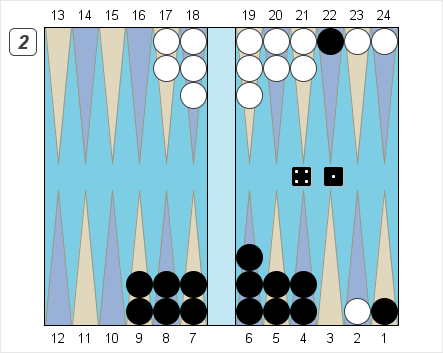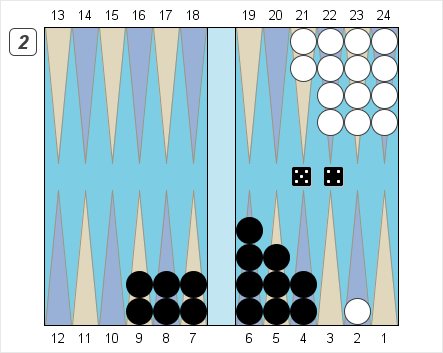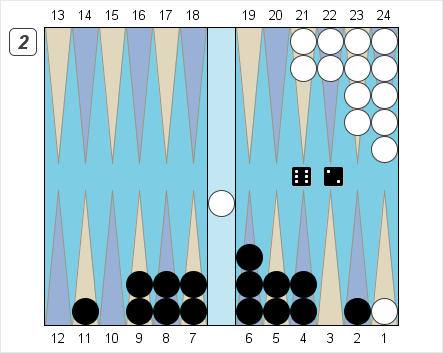A full six-prime is the most powerful formation in backgammon. A checker trapped behind a six-point prime can’t escape. To win, the trapped player has to somehow force his opponent to break his prime.
Although building a full prime is the strategic goal in many positions, we don’t actually see too many six-primes over the board. Often, the mere threat of making a six-prime will force a double and a drop. Although six-primes aren’t common, they are governed by their own set of strategic principles. Let’s take a look at a few.

Black – Pips 107 (+8)
I’ve given this position to all of my pupils over the years, and, despite its apparent simplicity, it’s proven to be one of the most difficult. Black has a 41 to play. He can keep a stripped six-prime in two different ways: by playing 6/5/1, not hitting, or 6/2*/1, hitting. Or he can avoid a stripped position and create more spares by playing 9/5 9/8. What’s the right idea?
The trap here is breaking the 9-point. It’s an appealing play because it looks “flexible”. But flexibility is one of those slippery concepts, like “duplication”, that’s easy to misuse if you forget what it’s for. The purpose of flexibility is to produce a position that can result in a six-prime. Once you actually have a six-prime, the main idea is not to continue to be flexible, but to maintain the asset you’ve got. Rule: Don’t break a six-prime unless you absolutely have to.
The right idea in Problem 1 is to just keep the prime and make the 1-point. Both the hitting and non-hitting plays have arguments in their favor, but the hitting play is a little better because it prevents White from fighting for his 3-point, which sometimes has the effect of driving Black’s checker back to White’s ace-point, making escape more difficult. By playing 6/2*/1, Black will mostly remain on White’s 3-point, letting him escape with his first six.

Black – Pips 95 (+40)
Problem 2 is just a trickier-than-usual application of our rule. All the reasonable looking plays that break the six-prime (making the 2-point, or clearing the 9-point) are inferior. Once you break up a six-prime, you’ll always be an underdog to get it back. As long as you keep the prime, you’re guaranteed to have it for at least one more roll, and perhaps longer. That’s a big advantage.
Here the right play is a little hard to find even if you know what you’re looking for. It’s just 6/1 6/2*. Black has gotten ahead of himself as he tried to roll his prime home, so this is an attempt to recirculate his checkers while his prime holds. He’d like White to enter with an ace or a deuce. While Black brings the checker around the board, he might be able to slot and cover his 3-point, rolling his prime forward in an orderly fashion.
In the vast majority of positions, ruthlessly maintaining the six-prime is correct. Backgammon wouldn’t be backgammon, however, if there weren’t a few exceptions to this rule. Mostly these occur when the winning side can break his prime to attack, typically picking up some extra gammons to compensate for the extra losing chances caused by a broken prime. Look at Problem 3:

Black – Pips 97 (+21)
The routine move to win the game is the straightforward 11/3, slotting the front of the prime and preparing to expend it next turn. But Black can do a bit better by abandoning the pure priming plan and playing for a blitz with 8/2 8/6! If White doesn’t anchor, Black will launch a strong attack next turn, while keeping losing chances acceptably small. (8/2 6/4 and 8/2 11/9 are also fine. Making the 2-point and playing for a blitz is the key idea.)





